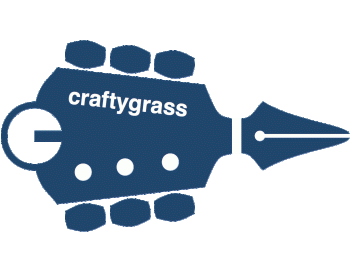A bookmark here. As I’ve lately listened to Tool more and more, on the strength of my recent awakening, it’s almost impossible not to wonder about Maynard James Keenan’s creative process. I mean hell, just from listening to the music, it’s obvious that this is not a typical front man; aside from the content itself of what he sings and how–which I’d argue is self-evidently interesting on its own–the sheer, raw range of his delivery, mood, emotion, texture, and the creativity in orchestrating it all…well, this seems like someone who may have a creative process that is interesting in and of itself. (You know, for someone who appreciates the art in…well, everything.)
And I have already picked up a little bit about his process–such as that with Tool and A Perfect Circle, he only starts adding lyric and vocal content after the music, written by others, is complete; things like that. So, I figured the next step would be to see if I could see or hear him present himself, in an interview, etc. And I’ve now seen a couple such clips.
Oh boy. Yeah, sometimes the gut feeling is the correct one. This is an interesting person, and it doesn’t take long to see that what you get, in Tool, APC, Puscifer, etc., springs very directly and honestly from the man behind it. As just one illustrative example, it seems that the reason he doesn’t begin work on lyric or vocal content until he can hear the music that will present it…is because to do otherwise just won’t work. Shoehorning an existing lyric onto existing music, is not the same as discovering a lyric already present but hidden in the music. (And personally, I totally identify with that. I’ve long wondered, as goes the traditional process of naming human babies: how is it possible to give a name to a living being you haven’t even met yet? I see the same impulse here, the same need for authenticity.) And this also explains much about how Keenan drapes his voice over the music in such an unconventional way…
And the overall way he answers questions and presents himself, strikes me as densely full of little nuggets and observations like this, going way beyond music and even all the other myriad things the man does and has done. You quickly get a remarkably clear picture of an artist-perfectionist who is at once uninterested in the mediocre, yet fascinated with the authentic no matter how ordinary. Some may see a contradiction in that, but I sure don’t.
This clip is an interesting overview, and worth the bookmark:
There is also “The Art of Work” four-part series, which begins here; it’s quite illustrative. This one is an audio interview (ironically the audio is terrible) which also reveals much, and I just loved this interview, if for no other reason than his take on his much-publicized use of the Fibonacci sequence in allocating the syllabic structure of the verses in Tool’s “Lateralus”.
“…in general, music IS the phi ratio…it’s already here…by pointing it out; [by] staring at it, and pointing at it with those numbers…it’s good to let people know about it…but I almost feel like it was kind of a…it was kind of a dick joke, in a way…I could do better.”
Somehow, given the way his personality comes through with such apparent consistency across everything I’ve seen thus far, I don’t doubt he’s being quite honest about that.
And that’s awesome.
UPDATE 4/26: By chance, I ran across this clip of Keenan delivering what must be a speech to potential investors for his winery, Caduceus Cellars.
The mixing of the background music is frequently irritating (to me anyway–it’s mixed way too loud against the ambient reverb of Keenan’s voice, and obscures his words pretty regularly throughout) but the content seems very illustrative of Keenan’s attitude. It is–thus, I’d add–an outstanding compact manifesto for any artist who might be hesitant to embrace the unapologetic approach to his, or her, own art.
It seemed important to capture it here, for sharing with anyone* who needs reassurance that it can be done, and how to explain why.
_________________________
* Just to be real clear about this, although you’d probably be able to figure it out on your own without having to read all that much of my vomitus to see it: “Anyone”, here, absolutely includes myself.
